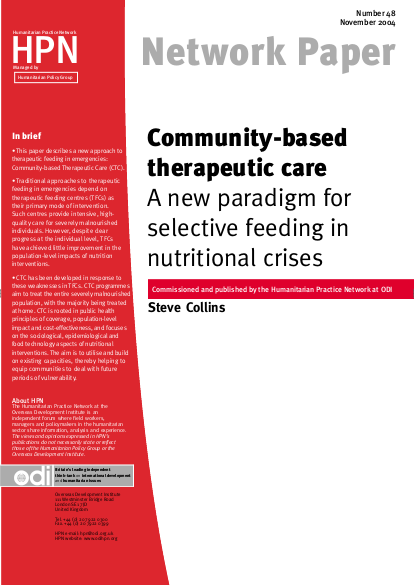A New Paradigm for Selective Feeding in Nutritional Crises

The CTC model was born of frustration with TFC programmes
during humanitarian emergencies in the 1990s. During the South Sudan
famine in 1998, for example, the TFC model clearly could not deliver substantial
population-level impact. Moreover, by congregating
severely malnourished people together, with insufficient
care and poor infrastructure, it was actually placing many
people at additional risk. In such an extreme situation, the
only way to achieve substantial impact was to focus on
ensuring that those who were treatable with the limited
resources at hand were admitted to, and remained in,
feeding programmes. In practice, this meant prioritising
coverage of the mass of acutely malnourished people over
intensive inpatient care for extreme cases.
CTC programmes aim to treat the entire severely
malnourished population, with the majority being treated
at home, rather than in TFCs or in Nutritional Rehabilitation
Units (NRUs). CTC is rooted in public health principles of
coverage, population-level impact and cost-effectiveness,
and focuses on the sociological, epidemiological and food
technology aspects of nutritional interventions. The aim is
to utilise and build on existing capacities, thereby helping
to equip communities to deal with future periods of
vulnerability.